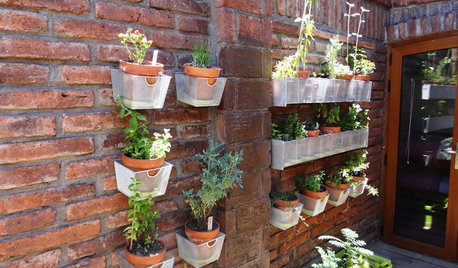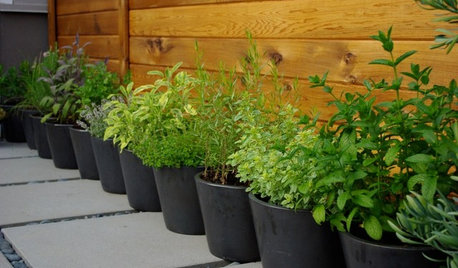Lettuce and spinach
chadwickthegoat
9 years ago
Featured Answer
Sort by:Oldest
Comments (16)
c1nicolei
9 years agoRelated Discussions
Winter sowing lettuce and spinach?
Comments (6)Lettuce and spinach are some of the earliest seeds I WS. I usually start my WSing now (last week of Jan/ first week of Feb) and I will probably do lettuce next week. If you are going to WS, you can do them now if you'd like, but you don't necessarily NEED to do them now. Mine all transplanted very well also. Can't help much with direct sowing as I don't do a lot of that. :) Dee...See Morewhat is killing my fall lettuce and spinach?
Comments (1)No reply required. I figured it out by digging around. It was cutworms. They will dine on cornmeal and Baccilus Thurengis tonight....See MoreLettuce and Spinach
Comments (6)My how things change! I've abandoned the cold frame to have the soil worked and amended, but I grew bodacious iceburg and romaine lettuce in the big planter, a new planter. They were gorgeous. And with the weather and moisture we've had I gave up on them bolting and tossed them into the rabbit hutches. They were all about 18" high. I couldn't help but notice the white juice that bled from the stalks that were torn. How nutritious! When the rabbits saw me coming with these they would jump and pounce on the side of the cage and use their teeth to swing the cage doors open. But we didn't like the flavor.. especially the kids. Even when young and tender they seemed too bitter and too aromatic. I think I have many different varieties on hand. I've always had trouble establishing meslin mix and wanted to establish that so I can try the differences. I'm assuming the cool weather creates a sweeter lettuce. Hope so....See MoreLettuce & Spinach
Comments (20)I generally just use a homemade olive oil and vinegar dressing, or sometimes add some fresh garden herbs to it. Tim is addicted to Paul Newman's Italian salad dressing. I try to go light on the dressing as I prefer to enjoy the flavors of the salad I'm eating. When we go to Fischer's meat market in Muenster, they have a huge selection of their own line of dressings in every flavor imaginable. I keep meaning to try one of their onion-flavored salad dressings, and their tomato-flavored one too....See MoreOkiedawn OK Zone 7
9 years agoc1nicolei
9 years agoOkiedawn OK Zone 7
9 years agochickencoupe
9 years agochadwickthegoat
9 years agochickencoupe
9 years agoc1nicolei
9 years agochickencoupe
9 years agoAmyinOwasso/zone 6b
9 years agochadwickthegoat
9 years agoOkiedawn OK Zone 7
9 years agoc1nicolei
9 years agoOkiedawn OK Zone 7
9 years agoluvncannin
9 years ago
Related Stories

FARM YOUR YARDCool-Season Vegetables: How to Grow Lettuce
Leaf, butterhead, crisphead or romaine — lettuce is best harvested in the cool weather of spring and fall
Full Story
EDIBLE GARDENSHouzz Call: Where Are the Craziest Places You Grow Edibles?
Basil in a bathtub, spinach stacked up a wall ... If your edibles occupy an odd spot, we’d like to know
Full Story
MOST POPULARHow to Start a Cool-Season Vegetable Garden
Late summer and late winter are good times to plan and plant cool-season crops like salad greens, spinach, beets, carrots and peas
Full Story
GARDENING AND LANDSCAPINGWorld of Design: 10 Home Gardeners Show Us Their Sweet Summer Harvests
From New York to Tokyo, these gardeners have turned their yards, terraces and rooftops into places of bounty
Full Story
EDIBLE GARDENSHow to Grow Your Own Sweet Summer Crops
This guide will help any gardener get started on growing the freshest warm-season veggies and berries for summer
Full Story
FARM YOUR YARDHouzz Call: Home Farmers, Show Us Your Edible Gardens
We want to see where your tomatoes, summer squashes and beautiful berries are growing this summer
Full Story
GARDENING GUIDES10 Easy Edibles for First-Time Gardeners
Focus on these beginner-friendly vegetables, herbs, beans and salad greens to start a home farm with little fuss
Full Story
FARM YOUR YARDHow to Grow Vegetables in Containers
Get glorious vegetables and fruits on your patio with a pro’s guidance — including his personal recipe for potting mix
Full Story
FEEL-GOOD HOME21 Ways to Waste Less at Home
Whether it's herbs rotting in the fridge or clothes that never get worn, most of us waste too much. Here are ways to make a change
Full Story
GARDENING GUIDES6 Ways to Grow Edibles in Small Places
No big backyard? Join in the grow-your-own fun with these small-space ideas for planting vegetables, fruits and herbs
Full Story


chickencoupe